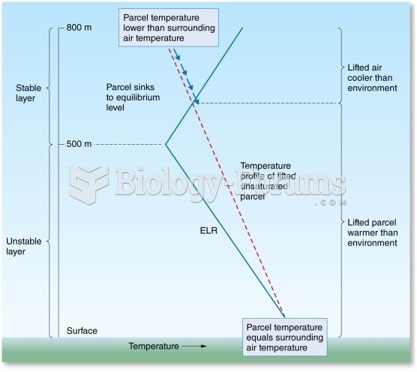|
|
|
Did you know?
Thyroid conditions may make getting pregnant impossible.
Did you know?
If you could remove all of your skin, it would weigh up to 5 pounds.
Did you know?
The eye muscles are the most active muscles in the whole body. The external muscles that move the eyes are the strongest muscles in the human body for the job they have to do. They are 100 times more powerful than they need to be.
Did you know?
The Romans did not use numerals to indicate fractions but instead used words to indicate parts of a whole.
Did you know?
On average, someone in the United States has a stroke about every 40 seconds. This is about 795,000 people per year.







